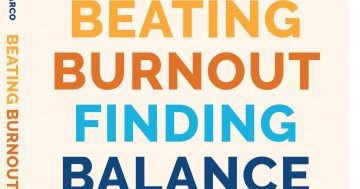Chris Bailey* considers the work of an international expert on chronic stress which maintains it comes from six factors.
 I’ve recently been poring through the research surrounding how and why we burn out — and have stumbled on a couple of fascinating ideas I think are worth sharing.
I’ve recently been poring through the research surrounding how and why we burn out — and have stumbled on a couple of fascinating ideas I think are worth sharing.
Burnout is what we experience when we face too much chronic stress over an extended period.
It’s characterised by three attributes: Exhaustion, cynicism, and a lack of productivity, all at the same time.
It’s for this reason that, technically speaking, exhaustion alone does not qualify as burnout.
The first curious lesson from the research relates to where burnout comes from.
Burnout is the result of one thing and one thing only: Too much chronic stress in our work and life.
Chronic stress is simply stress that we face repeatedly.
It can come from anywhere, including constant demands at work, strained relationships, financial worries, or anxiety around what our post-pandemic future looks like.
Unlike acute stress, which is one-off and temporary, chronic stress feels like it’s never going to end.
The second interesting idea is about what causes burnout — burnout is technically a workplace phenomenon.
Research conducted by Christina Maslach, perhaps the world’s foremost burnout researcher, has found six main areas of work serve as a breeding ground for chronic stress.
The worse you are in these areas, the more likely you are to burn out. They are as follows.
Workload
How sustainable your level of work is over time.
Control
How much autonomy you have and whether you can choose which projects you work on.
The less control you have over your work, the more likely you are to burn out.
Reward
You need to be properly rewarded for the work you do.
This means monetarily, but also socially, where you’re recognised for your contributions, and intrinsically, where you find your projects rewarding in and of themselves.
Community
The stronger your relationships at work and the more supported you feel, the less likely you are to burn out.
Fairness
Maslach defines this as “the extent to which decisions at work are perceived as being just, and people are being treated with respect”.
Values
Whether you connect with your work at a deeper level.
When it comes to these variables, no job will be perfect — even if you work for yourself.
However, if you have been feeling more burnt out than usual — especially with pandemic stress layered atop your day — you might want to consider these six areas.
I also recommend scanning through the six triggers and reflecting quickly on how well you’re doing in each.
Or you can rank on a scale of one to 10, how healthy your work is in each dimension.
You can also chart this number over time to see if you’re making improvements.
We can’t always control these six areas of our work, but by bringing some awareness to them, we can figure out what we do have the power to change, where our stress is coming from, and how to improve our work for the better.
When facing unprecedented amounts of chronic stress, taming the stress we can control is critical.
*Chris Bailey has written hundreds of articles on the subject of productivity, and is the author of two books: Hyperfocus, and The Productivity Project. He can be contacted at alifeofproductivity.com.
This article first appeared at alifeofproductivity.com.











